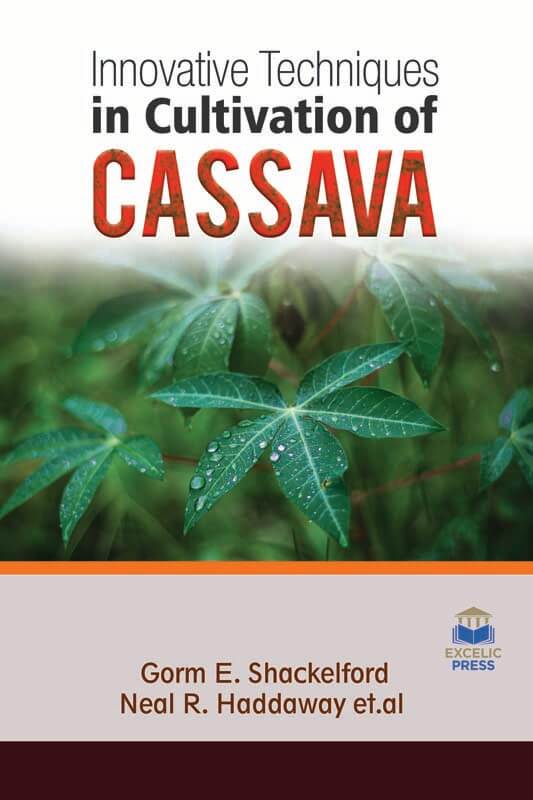Cassava is a staple crop that is important for food security in the tropics. Cassava is native to South America, but it is grown throughout the tropics and subtropics. It is the fourth most important source of carbohydrates for human consumption in the tropics and thus occupies a uniquely important position as a food security crop for smallholder farmers. Cassava has been called “the drought, war, and famine crop” because it can be grown in challenging conditions and it can be harvested when needed, providing a reserve of food in times of war and famine. Improvements in cassava yield, quality, and sustainability could be important for food security in order to fulfill the need for increasing the human population.
This book comprises research addressing the issues in areas like breeding and agronomy, managing and controlling the range of diseases affecting cassava as well as post-harvesting methods. However, cassava farming can have severe environmental impacts, such as habitat destruction and soil degradation, if it is not carefully managed. Therefore, a wide range of agricultural and environmental outcomes should be considered when cassava farming practices are recommended as “good agricultural practices”. The book proposes a systematic map of research on cassava farming practices and their impacts on yield, quality, profitability, soil, water, wildlife, pathogens, pests, weeds, and other agricultural and environmental outcomes.
Crop genetic resources are important in ensuring food security since they provide the raw materials needed for crop improvement. Farmers over the years have cultivated a variety of crops on their farms that are adapted to particular needs and conditions. It is important to support the conservation of crop genetic resources by fully understanding the traditional knowledge and practices that influence their selection maintenance and conservation. Consequently, this book explores the theory that on-farm conservation of cassava germplasm is influenced by farmers’ traditional and cultural preferences of particular varieties.
Further, a case study on the soil-water-crop relationship and land utilization pattern in the cassava cultivation in an agroforestry system is presented. Generally, climate-resilience agriculture is about adding considerations of climate variability and climate change to decision-making. This book, therefore, describes the characteristics of cassava and how to use simple climate assessment tools for cassava to withstand or escape excessive moisture deficit. With advances in functional genomics and genome editing approaches in this post-genomics era, there are unprecedented opportunities and potential to accelerate the improvement of this important crop. Here, we discuss the important role of novel functional genomics and genome editing technologies have and will continue to play in cassava improvement efforts. In this book, we also present the cassava diseases and their treatment methods and techniques. This book concludes with a review of various harvesting options for cassava which is crucial to ensure proper adaption and adoption of improved harvesting methods applicable to farmers from different parts of the globe. The book will serve as a valuable guide to students and practitioners working in the associated field and, moreover, may provide new concepts and starting topics for future researches.














Reviews
There are no reviews yet.